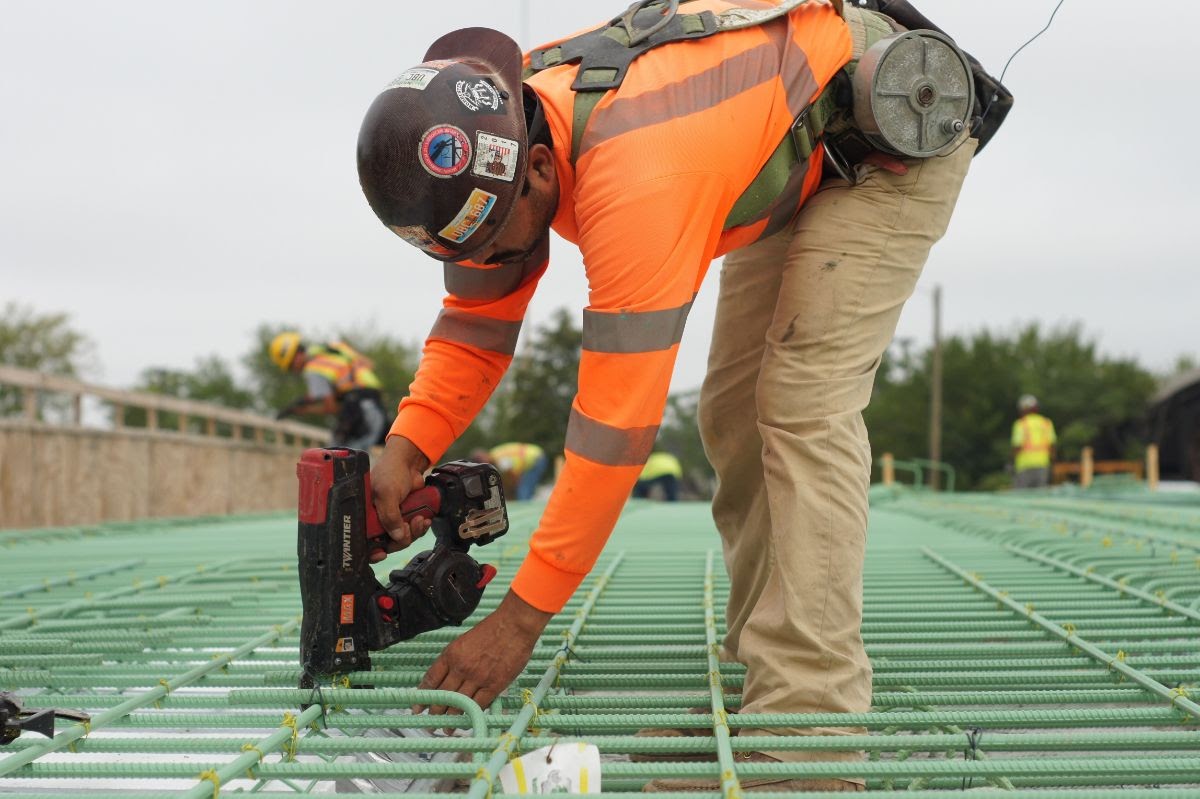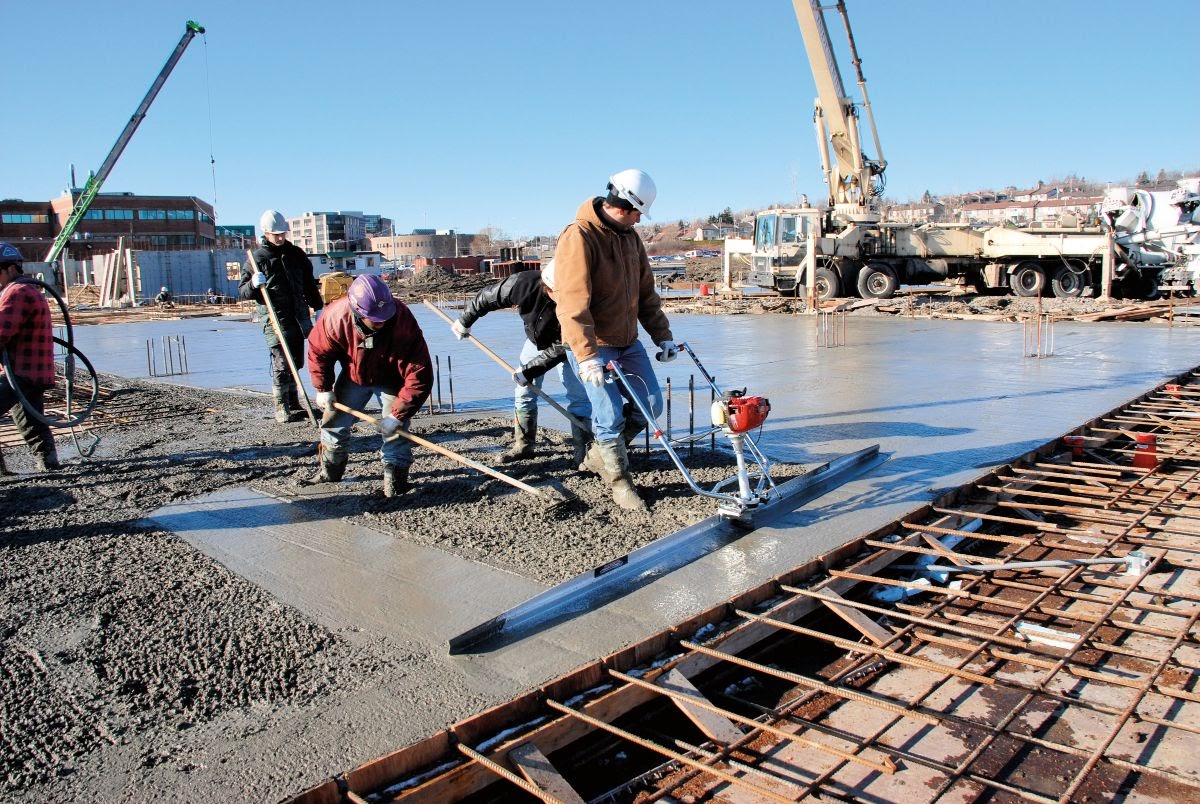Concrete has been used in construction projects for centuries, but that doesn’t mean the methods and technology have stayed the same. Just like in any other industry, engineers and builders are coming up with new approaches and ideas that make structures stronger, safer, and more aesthetically pleasing. The use of rebar, short for reinforcing bars, continues to be so important that few people would consider pouring concrete without first reinforcing the project. Keep reading to learn all about rebar.
The Purpose of Rebar
To put it simply, rebar is a steel bar that strengthens concrete. Rebar has been used for centuries, and we know this because structures from as far back as the 15th century are still intact as proof of the strength of reinforced concrete and masonry. Concrete is incredibly strong when it’s compressed, but not so much in tension. That’s where rebar comes in. Pouring concrete around rebar compensates for this by providing tensile strength to a structure. Concrete often cracks, and if it wasn’t for rebar, many structures would crumble as a result. For instance, a concrete beam supported only on the ends isn’t strong enough in the middle to support the weight of most structures.
Rebar is so versatile that there are several common categories of use. Primary reinforcement refers to the process of using rebar to guarantee the structure is strong enough to support the design loads. Secondary reinforcement is used for durability and aesthetic reasons, as it limits cracking and reduces stress caused by shrinking and expanding due to temperature changes. Finally, rebar can be used to hold other steel bars in place or on the outside of masonry structures to add support.
Rebar guarantees that concrete structures can stand up to the resistance and weight put on a structure. It significantly increases the durability of concrete and masonry. Ask any engineer or structural designer, and they’ll laud the benefits of effectively using rebar in any project.
Not only does rebar strengthen concrete structures, but it also does so while reducing the required thickness of your concrete pour. You’ll need less concrete to build a stronger, longer-lasting structure, which makes rebar a good investment for any building project.
All About Making Rebar
How often do you think about how the household items you use every day are made? What about the components of the home itself? Up until the 1960s, rebar was shaped from new material. It’s now made from scrap metal, and most rebar is now made up of over 95% recycled materials. Your home could be held up by old cars, appliances, and or any number of other sources of steel.
Scrap metal is melted down in an electric arc furnace and cast into billets, which are then hot rolled into the familiar bar shape. After rolling, the straight rebar is cut to length and then sent to a cooling bed to be air-cooled. Coiled rebar is sent to a reforming tub, where it is spooled and cut to the desired weights and lengths.
Rebar is often made from recycled steel and formed into one of the following shapes.
- Round
- Ribbed
- Stretched, ribbed, and twisted
- Square twisted
As you know, you rarely use a single piece of rebar. Often, it’s shaped into various shapes, known as a “mesh” or grid, to be used effectively for different purposes, such as:
- Square mesh, mainly used for floor slabs
- Long mesh, used for pavement and road construction
- Rectangular mesh; used for floor slabs.
- Wrapping mesh supports suspended slabs.
Rebar is available in many different shapes and sizes, and the helpful team at Williams Equipment & Supply can help you find the best option for any project.
Types of Rebar
Not every project has the same support needs. Structures that experience significant stress or are in extreme environments may need more a more specialized product than your average flooring slab in a home.
The following are some of the options available to you and the benefits they offer:
- Carbon Steel rebar: This is the most common and affordable option. It offers a lot of strength and durability and is found in the majority of concrete pours.
- Gas fiber-reinforced polymer: This rebar contains fiberglass, providing significantly more tensile strength than other varieties. It’s a popular alternative to steel.
- Galvanized rebar: This option is less likely to corrode, as it has a zinc coating to protect it. It’s popular for environments where corrosion is a concern.
- Stainless steel: This product is not as widely used because it’s more expensive than other options. It’s used when corrosion is a concern, but zinc is not an option.
- Epoxy coated rebar: This option also prevents corrosion, but is more affordable than other options that serve the same purpose.
Long Lasting Durability, with Help from Williams Equipment
Nowadays, you don’t build with concrete without using rebar. That’s how important and effective it is! To get the best possible result at the end of any project, consult the team at Williams Equipment and Supply to get everything you need. Not only can we help you choose the right kind of rebar, but we’ll also make sure you have all the tools you need to work with rebar, concrete, and every other aspect of your project. Contact us today through our website or visit one of our many conveniently located locations to get started.

